Abstract
Baldwin, R. L. (Michigan State University, East Lansing), W. A. Wood, and R. S. Emery. Conversion of lactate-C14 to propionate by the rumen microflora. J. Bacteriol. 83:907–913. 1962.—Rumen microflora enriched on five different diets calculated to present increasing carbohydrate or lactate availability were used to determine the contribution of the randomizing (succinate) and nonrandomizing (acrylate) routes to propionate with lactate-2-C14 and -3-C14 as substrates. Propionate was labeled as though 70 to 90% was formed via the nonrandomizing route. This percentage was highest on diets containing high levels of carbohydrate or lactate or both. Evidence for the presence of succinic dehydrogenase, acetokinase, phosphotransacetylase, and coenzyme A transphorase was obtained with cell-free extracts. Propionate-2-C14 and lactate-2-C14 were converted by extracts to the activated derivatives of acrylate, lactate, propionate, and acetate.
Full text
PDF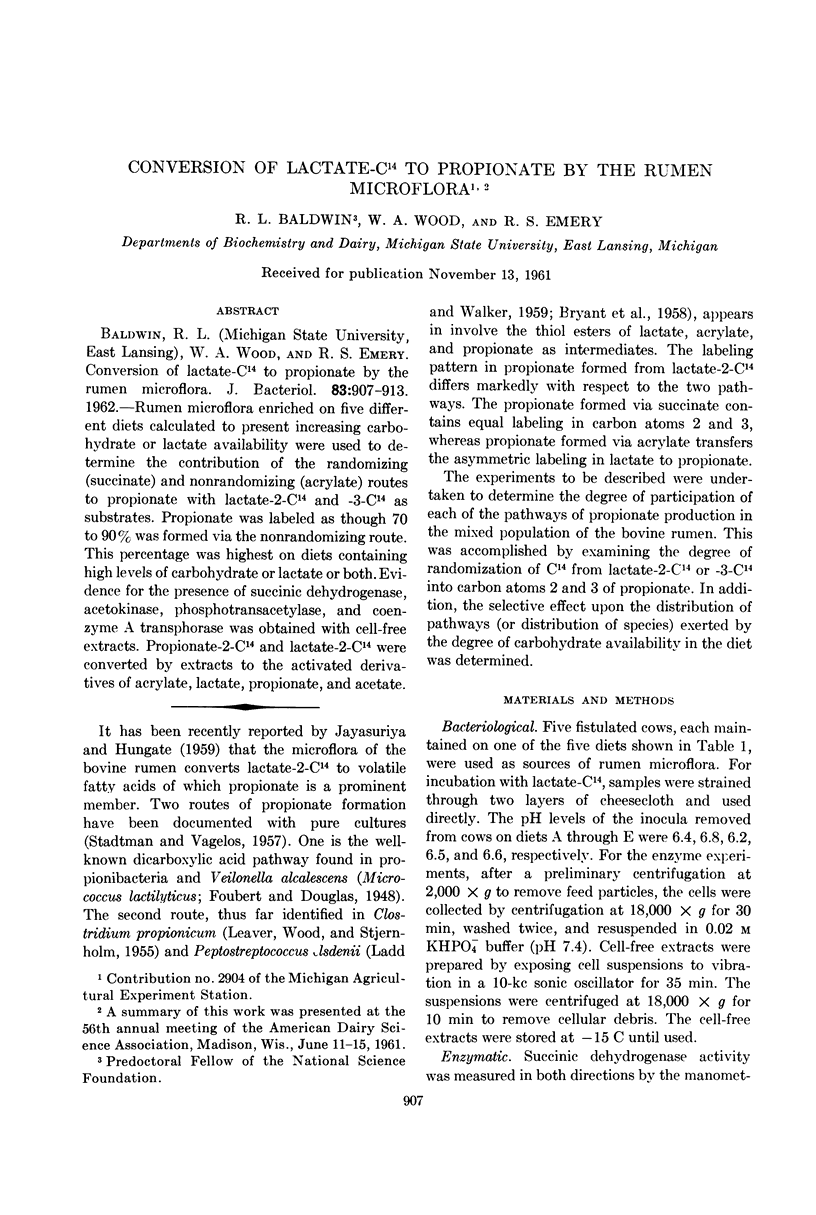
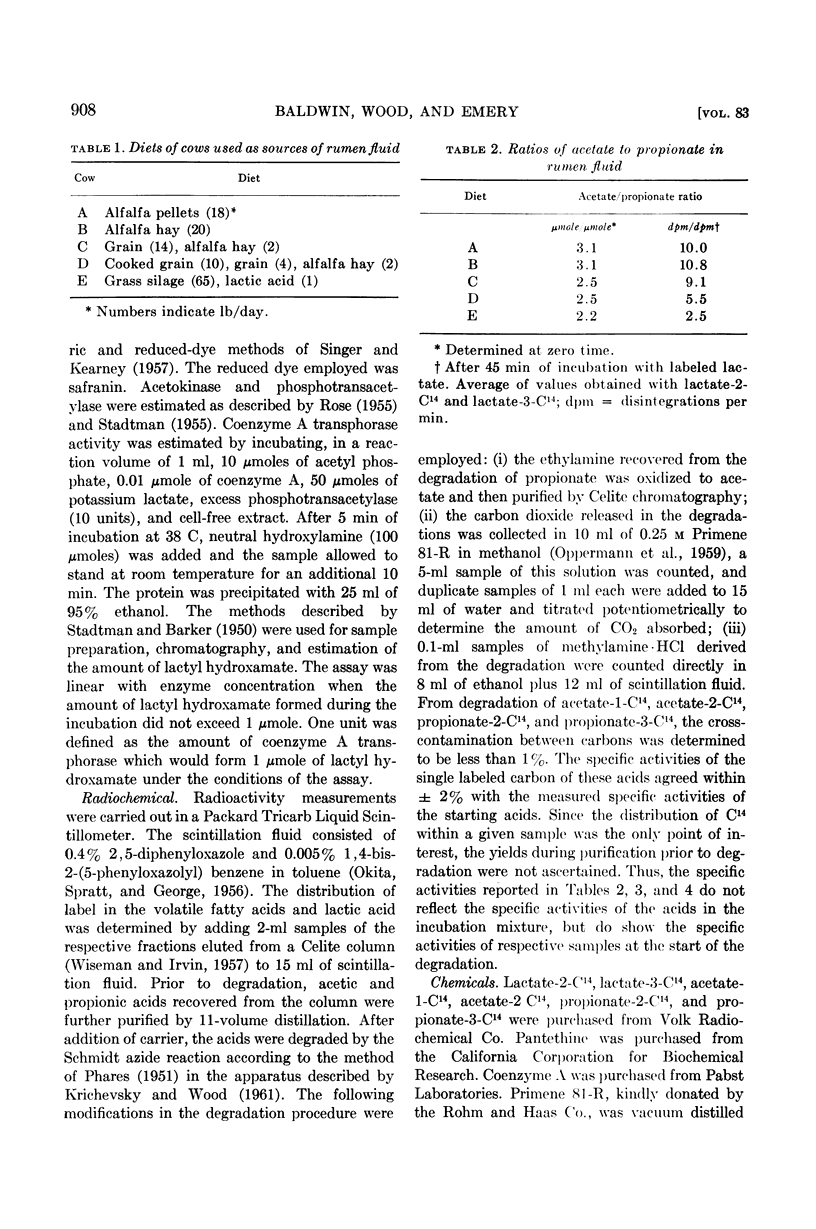
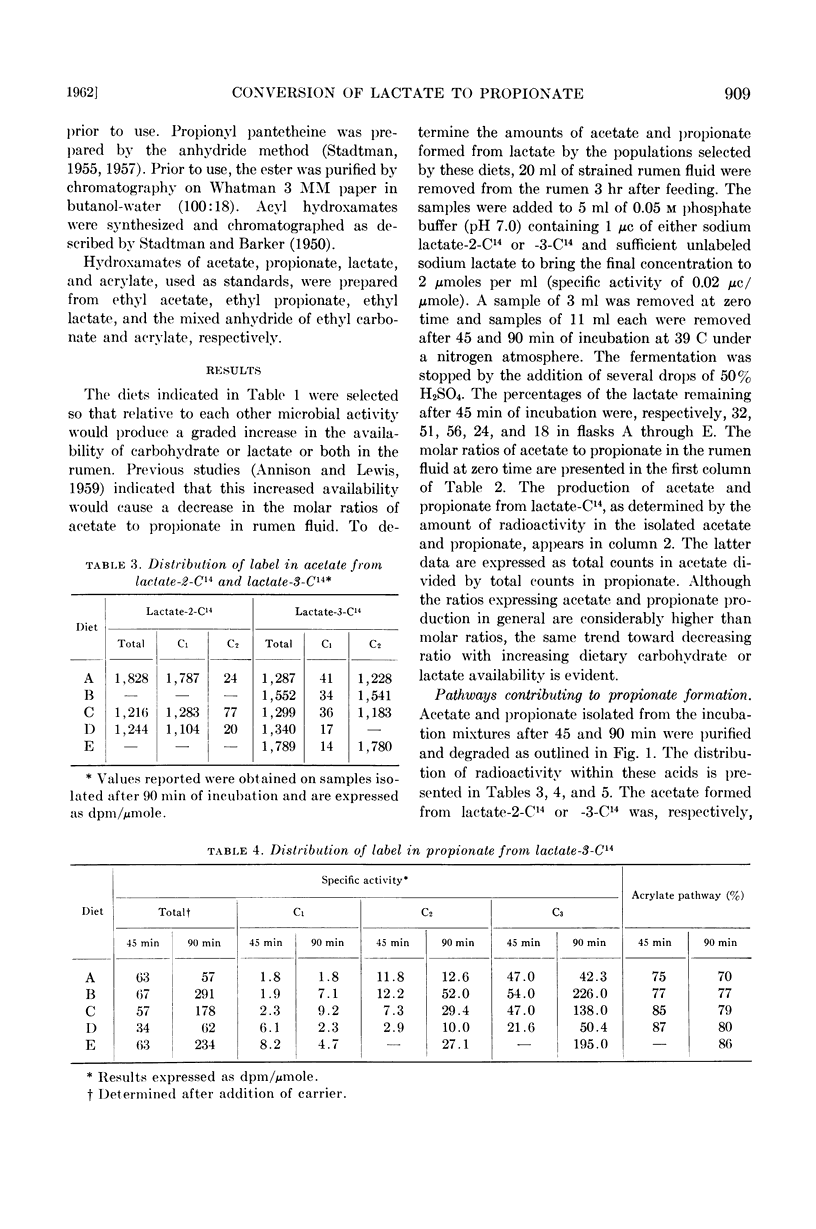
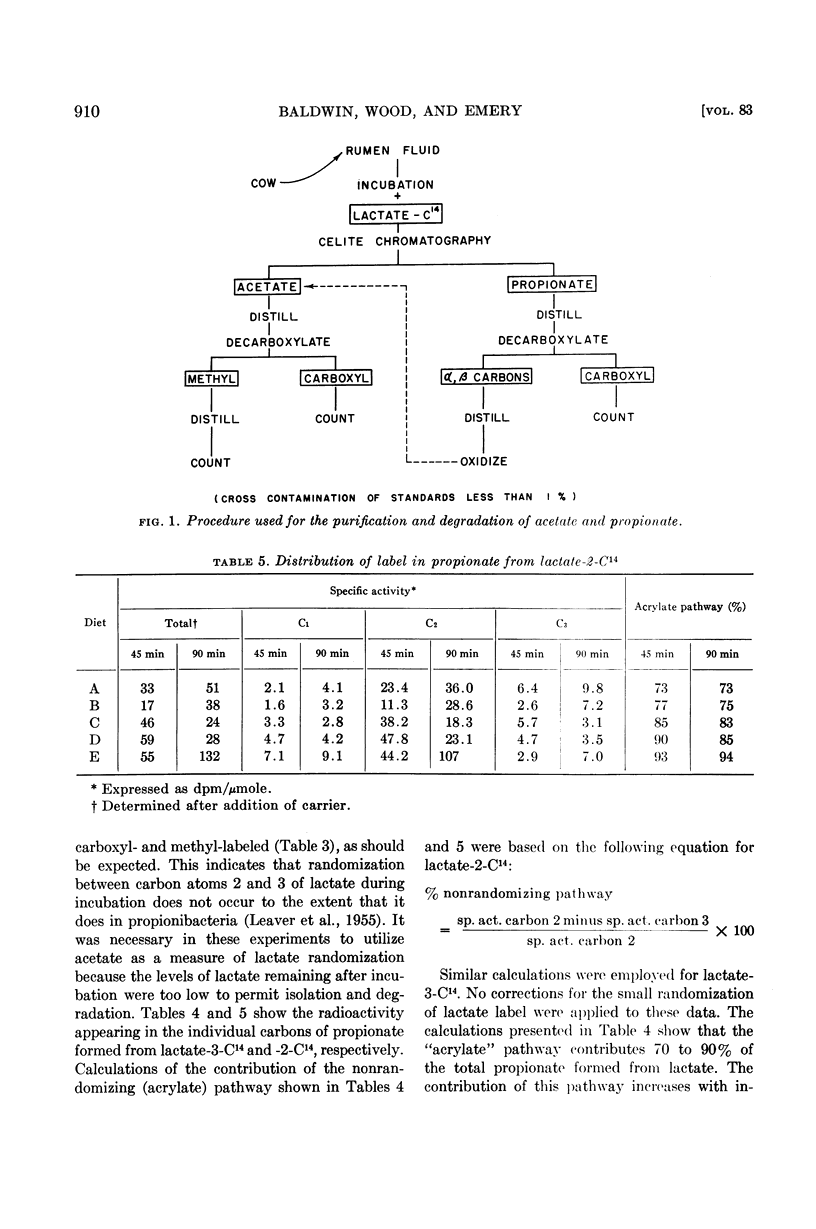
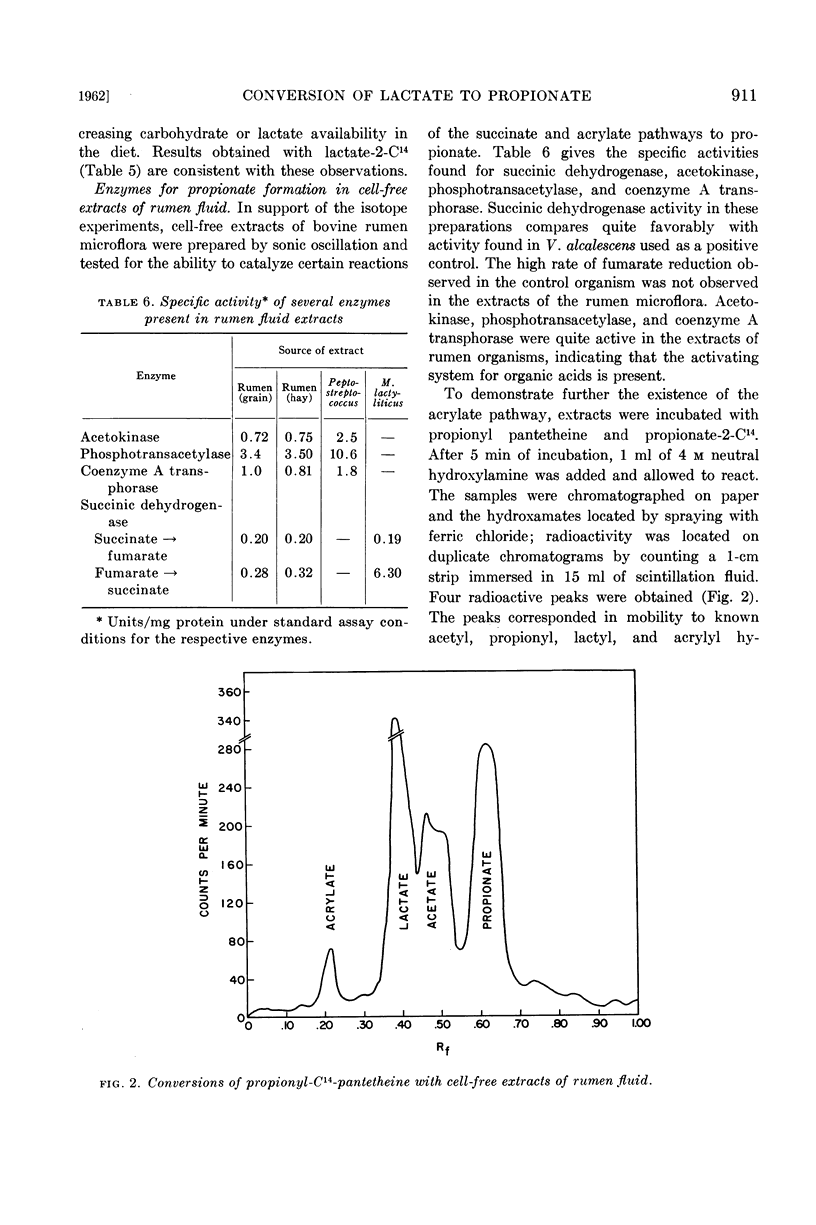
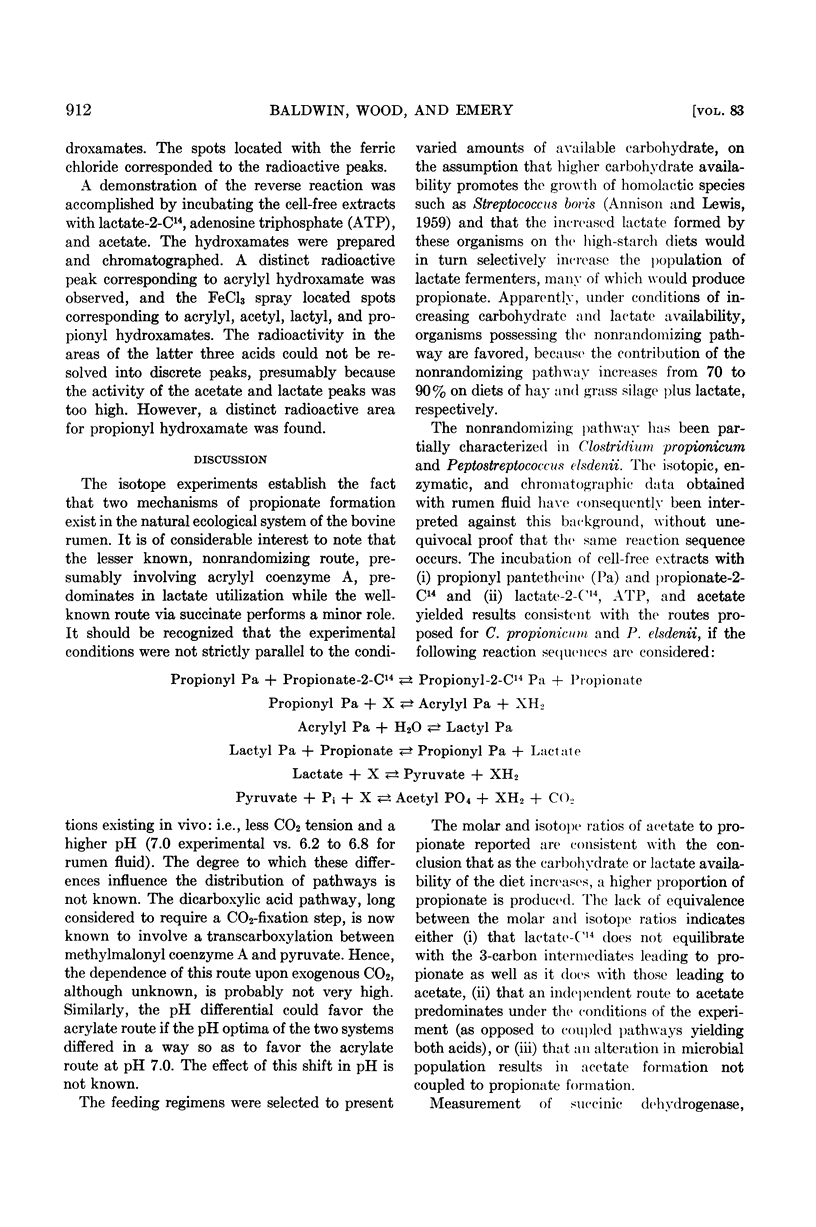
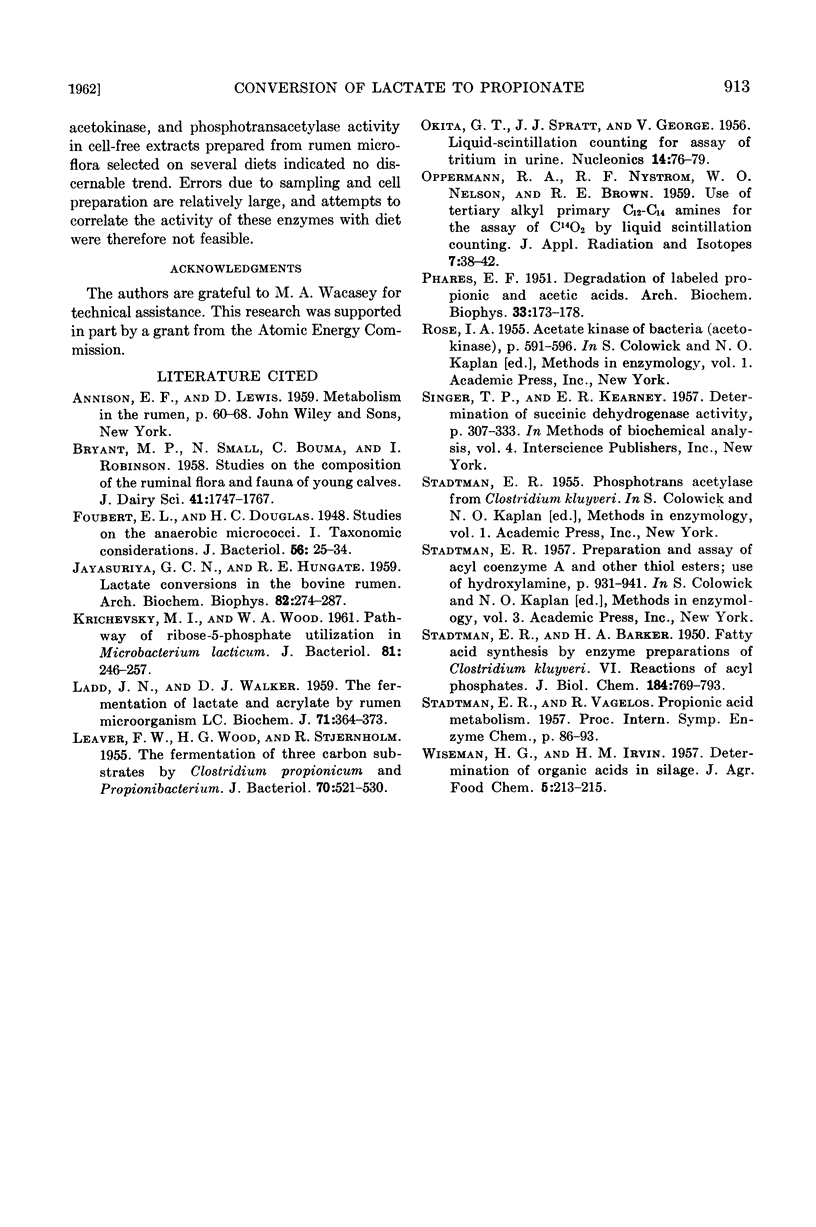
Selected References
These references are in PubMed. This may not be the complete list of references from this article.
- Foubert E. L., Douglas H. C. Studies on the Anaerobic Micrococci: I. Taxonomic Considerations. J Bacteriol. 1948 Jul;56(1):25–34. [PMC free article] [PubMed] [Google Scholar]
- JAYASURIYA G. C., HUNGATE R. E. Lactate conversions in the bovine rumen. Arch Biochem Biophys. 1959 Jun;82(2):274–287. doi: 10.1016/0003-9861(59)90123-7. [DOI] [PubMed] [Google Scholar]
- KRICHEVSKY M. I., WOOD W. A. Pathway of ribose 5-phosphate utilization in Microbacterium lacticum. J Bacteriol. 1961 Feb;81:246–257. doi: 10.1128/jb.81.2.246-257.1961. [DOI] [PMC free article] [PubMed] [Google Scholar]
- LADD J. N., WALKER D. J. The fermentation of lactate and acrylate by the rumen micro-organism LC. Biochem J. 1959 Feb;71(2):364–373. doi: 10.1042/bj0710364. [DOI] [PMC free article] [PubMed] [Google Scholar]
- LEAVER F. W., WOOD H. G., STJERNHOLM R. The fermentation of three carbon substrates by Clostridium propionicum and Propionibacterium. J Bacteriol. 1955 Nov;70(5):521–530. doi: 10.1128/jb.70.5.521-530.1955. [DOI] [PMC free article] [PubMed] [Google Scholar]
- OPPERMANN R. A., NYSTROM R. F., NELSON W. O., BROWN R. E. Use of tertiary alkyl primary C12-C14 amines for the assay of radiocarbon-labeled carbon dioxide by liquid scintillation counting. Int J Appl Radiat Isot. 1959 Nov;7:38–42. doi: 10.1016/0020-708x(59)90278-9. [DOI] [PubMed] [Google Scholar]
- PHARES E. F. Degradation of labeled propionic and acetic acids. Arch Biochem Biophys. 1951 Sep;33(2):173–178. doi: 10.1016/0003-9861(51)90094-x. [DOI] [PubMed] [Google Scholar]
- SINGER T. P., KEARNEY E. B. Determination of succinic dehydrogenase activity. Methods Biochem Anal. 1957;4:307–333. doi: 10.1002/9780470110201.ch9. [DOI] [PubMed] [Google Scholar]
- STADTMAN E. R., BARKER H. A. Fatty acid synthesis by enzyme preparations of Clostridium kluyveri. VI. Reactions of acyl phosphates. J Biol Chem. 1950 Jun;184(2):769–793. [PubMed] [Google Scholar]


